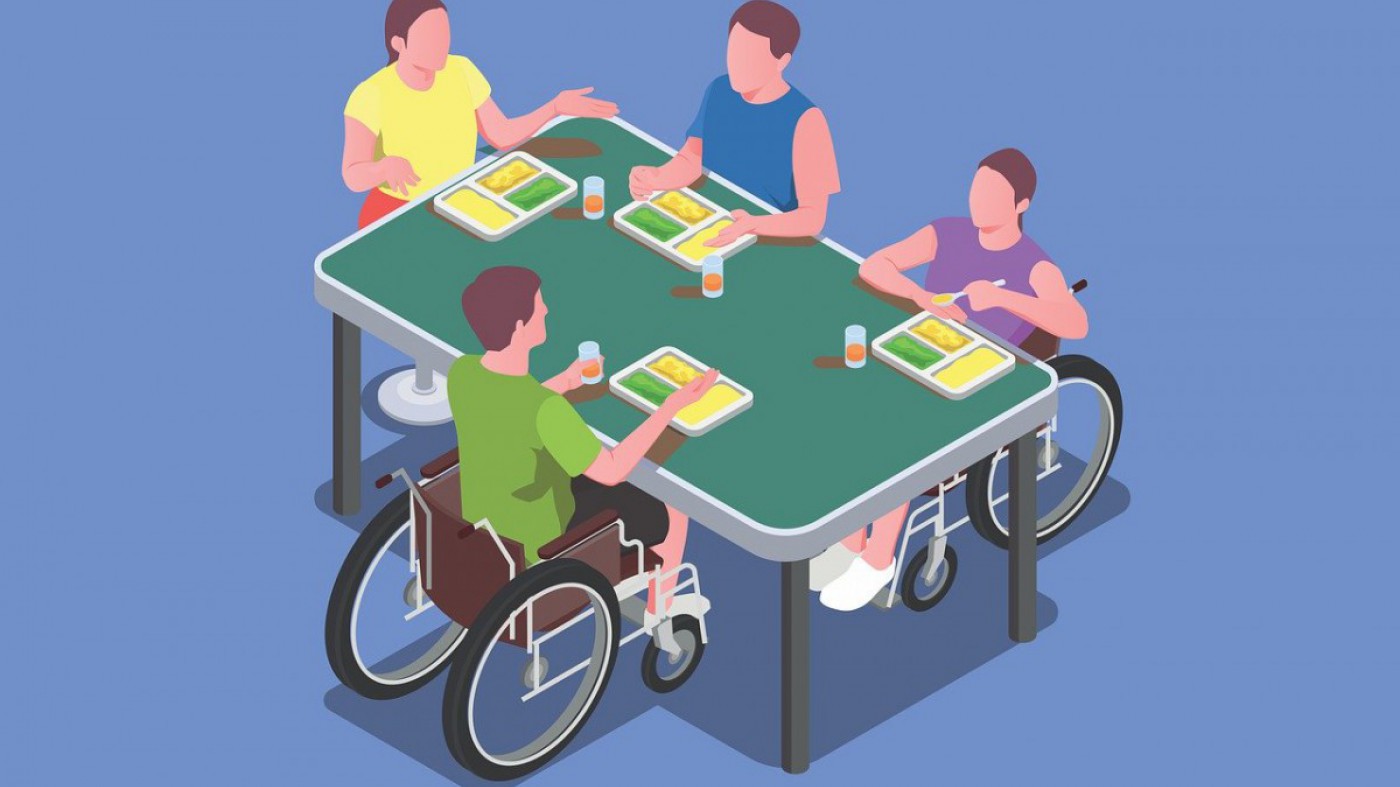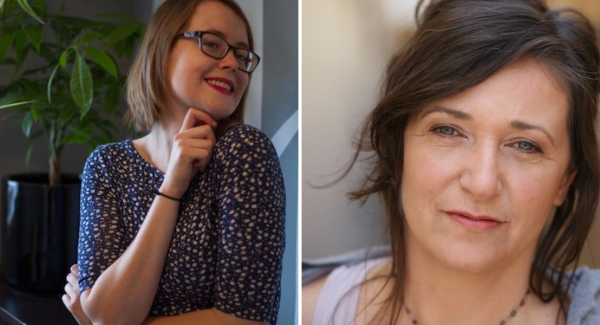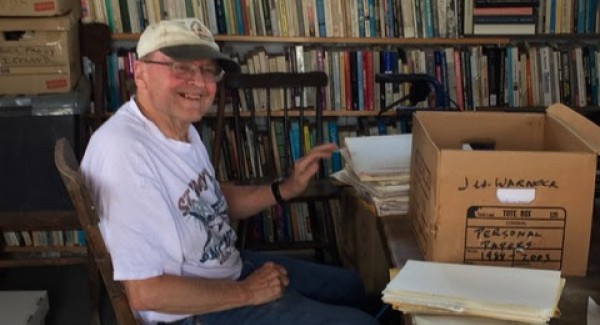When collecting CERB means losing disability benefits

Alberto Fabregas/Pixabay
Amid the COVID-19 pandemic, the Canadian government has introduced the Canadian Emergency Response Benefit (CERB) to support Canadians who have lost work during the crisis. First rolled out in April, CERB has faced criticisms – among these, the fact that some people are barred from receiving it and that without a moratorium on rent, it funnels public money into the pockets of landlords, most of whom are large corporations.
It has also shone a light on the concerns of disabled people and the fact that they’re expected to survive on significantly less financial support through provincial support programs than people who qualify for CERB. Income assistance rates for disabled people vary widely across the country, from $663 per month in New Brunswick to $1,685 in Alberta for single one-person homes. And while rates fluctuate from year to year, only Alberta comes even blushingly close to the CERB’s $2,000 per month.
In Saskatchewan and the Maritime provinces, collecting CERB means losing your entire provincial social assistance payment.
The federal government has urged the provinces to allow people to keep all of their CERB and social assistance cheques, without clawing back the latter – but only British Columbia, the Northwest Territories, and Yukon have followed the feds’ advice. Alberta, Manitoba, Ontario, and Quebec, meanwhile, have decided to allow recipients to collect partial CERB benefits before clawbacks start. In Saskatchewan and the Maritime provinces, collecting CERB means losing your entire provincial social assistance payment.
In Saskatchewan, disabled people on income assistance live off a little more than half of what CERB is paying, an amount that falls well below the provincial poverty line. The Saskatchewan Assured Income for Disability (SAID) – which pays a base rate of $1,064 per month for a single person, an amount near the middle of the pack, provincially – allows those who have a “significant and enduring” disability and who struggle to cover basic living expenses to receive monthly funding for living costs, housing, and transportation.
An implicit hierarchy
Some COVID-19 benefits programs, like the Canada Emergency Student Benefit (CESB), seem to acknowledge the simple fact that being disabled costs more. When the CESB was initially announced in April, the benefit promised $1,250 for students and those soon to be starting post-secondary education, along with recent graduates. Those who qualify for CESB and have a disability would receive $1,750, an amount that has since been increased to $2,000.
The fact that students and recent graduates with disabilities are eligible for significantly more financial aid than their counterparts who are unable to work suggests that there’s a hierarchy at play that dictates which disabled people are deserving of support. A.J. Withers, a Toronto-based anti-poverty activist and author of Disability Politics and Theory tells the Sask Dispatch that the hierarchy relies on the tropes of the “deserving” versus the “undeserving” poor. In the case of the CESB and SAID, disabled people who are able to attend university – and are, as Minister of Employment, Workforce Development and Disability Inclusion Carla Qualtrough puts it, “connected to the labour market” – are deserving of roughly twice as much support during the pandemic.
It “sets up poor people to fight amongst themselves for crumbs rather than fight the people that are giving out the crumbs, and really works to legitimize certain disabled people as deserving.”
This manufactured division between people in poverty is reinforced by government agencies when they lay out their income support plans, and Withers says it “sets up poor people to fight amongst themselves for crumbs rather than fight the people that are giving out the crumbs, and really works to legitimize certain disabled people as deserving.” And in fact, the government goes so far as to reserve the right to judge who is disabled in the first place, creating divisions not only between non-disabled and disabled poor people, but within the disabled community as well.
“Many poor disabled people on social assistance are not getting disability benefits and never will because they don’t fit these really strict medical criteria,” Withers continues. According to the SAID handbook, the eligibility requirements are that you “[h]ave a disability that greatly impacts your daily living activities, and causes you to require support in the form of an assistive device, the assistance of another person, a service animal, a modified environment or other accommodation.” That definition excludes people who have disabilities that are uncommon or difficult to diagnose, such as those with mental illnesses that do not fit under an outdated definition of disability or those who face economic or social barriers to diagnosis.
Applying for the SAID requires an assessment by a physician and a statement by a reference who can testify that the applicant has a disability that fits the criteria. Ironically, the process of applying for SAID and proving you’re “disabled enough” to qualify can carry costs of its own. Disabled people living in rural and remote areas who don’t have access to a vehicle may have to pay expensive fares just to get to a doctor who can assess them. Those who can afford the fare – and all the other associated costs of travel, like meals and hotels – may then find themselves having to pay for the physician’s assessment out of pocket, because the documentation the physician has to fill out is often treated as a doctor’s note and is therefore not covered under the provincial health plan.
These limitations mean that disabled people aren’t able to build up any kind of savings – say, for a down payment on a home, post-secondary tuition, or even just a holiday – without risking their income support being withdrawn.
And people who qualify for SAID must comply with a strict set of financial conditions or risk losing their benefits, a situation that seems almost designed to keep people in poverty. The maximum amount of money a SAID recipient can hold in their savings before they risk being kicked off the program is $1,500, and the maximum amount a person can earn per year before clawbacks is $6,000. These limitations mean that disabled people aren’t able to build up any kind of savings – say, for a down payment on a home, post-secondary tuition, or even just a holiday – without risking their income support being withdrawn.
Although living off the SAID still means living well below the poverty line, jumping through the hoops to qualify is still worthwhile, since the benefit is substantially more than other income support programs. In Saskatoon and Regina, the base amount for adults receiving Saskatchewan Income Support (SIS), including a housing allowance, is $860, while the SAID base amount, before amounts given for utilities, is $1,064. It’s a disparity that can create tensions. “People on welfare often don’t have solidarity for people who are on disability benefits because they see how folks on disability benefits get so much more money and are just like, ‘Well, they’re fine,’ when they’re not,” Withers adds.
The price of a pandemic
Meanwhile, one SAID recipient, who spoke on the condition of anonymity for fear of reprisal from the program’s administrators, described the confusion facing those receiving provincial disability benefits during the pandemic: “I don’t know a lot and it appears nobody else does, either.”
They say part of the disconnect is because “[t]hey [the Saskatchewan government] are expecting that our lives don’t change very much.” But many people with disabilities have seen their costs of living rise during the pandemic. Medical equipment like masks, gloves, and hand sanitizer, which many immunocompromised people used daily even before the pandemic, have increased in price and been emptied off the shelves. Medically vulnerable and immunocompromised people who are unable to go outside during the pandemic are forced to pay delivery fees for groceries and prescriptions. And those who qualify for the CERB but who lose their provincial disability funding as a result of claiming it will find themselves having to pay the full cost of prescriptions and medical necessities like catheters and suppositories.
“Part of the logic behind what disability and welfare payments are set at is called ‘lesser eligibility,’ or ‘less eligibility,’ which is the idea that social assistance should always be less than minimum wage so that people will ‘choose to work.'”
In response to the criticism that the CERB offers more money than provincial disability programs, some argue that those receiving disability benefits should be grateful to receive anything at all, or that the CERB should only be given to those who will re-enter the workforce.
“Part of the logic behind what disability and welfare payments are set at is called ‘lesser eligibility,’ or ‘less eligibility,’ which is the idea that social assistance should always be less than minimum wage so that people will ‘choose to work,’” Withers explains, “even though the reality of capitalism and disablism means that it’s not actually a choice for people who are unemployed to be able to work.”
“I think poor people, first and foremost, need to reject that divide that’s put in place to have people abandon any notion of solidarity,” they continue, adding that we need to “work together and unite: unite with other groups of poor and working-class people.”
When asked about what non-disabled people should be understanding from disabled people in this pandemic, one Saskatchewan interviewee who asked for anonymity for fear of complicating their benefits said, “Pay attention to what we go through more, and recognize that it is a bit bigger of an impact than they thought it might be, and realize that a lot of our lives are played by ear.”
Withers says that non-disabled organizers who have been struggling to adapt their campaigns to meet physical distancing requirements should look to the organizing skills of disabled people, who have experience building social movements without being able to gather in person. “I think we’re all struggling to think about ‘how do we organize in this situation that we’ve never been in?’” they note. “I think that disabled folks have a lot of skills to offer. A lot of disabled folks have been stuck at home and organized from home, and can shine right now.”




